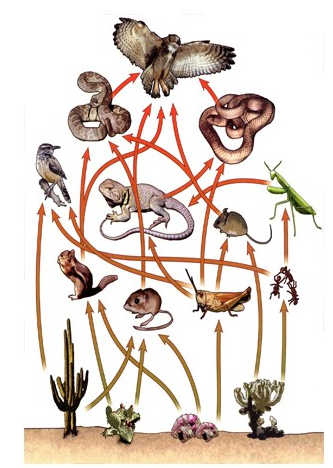Which elements are most common in the Earth's crust? What sorts of minerals (i.e., specific families) result from these particularly common elements? What sorts of rocks are most common in the crust as a result?
What will be an ideal response?
Answer: The most common elements are oxygen, silicon, aluminum, sodium, calcium, potassium and magnesium. The most common minerals that result from these elements are silicate minerals, including olivines, pyroxenes, amphiboles, micas, feldspars, and quartz. As a consequence, rocks made of these minerals, such as basalt, granite, schist, and quartz sandstone, are very common in the crust.
You might also like to view...
Food webs like the one shown below generally show

A) consumers only at the secondary level and above.
B) the degree of interdependence between organisms in ecosystems.
C) all of the structures in an ecosystem.
D) less information than a food chain.
Which politician changed the Roman constitution so much, especially weakening the plebeian tribunate, that it was never the same again?
A) Catilina B) Marius C) The Gracchi brothers D) Sulla
The oldest grain of sand found and dated is made of
A) zircon. B) diamond. C) peridotite. D) basalt.
Permeability refers to the soil's capacity to store water
a. True b. False Indicate whether the statement is true or false